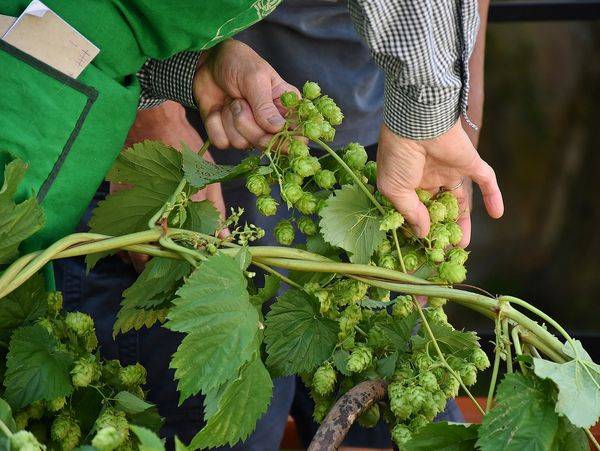
Do you know which is the costliest vegetable or crop in the entire world? Let’s know about this vegetable, which has created lots of opportunities for farmers across the globe and is now making its debut in India.
As discussed earlier, hop-shoots can offer you many benefits and profits along with a handsome source of income being the costliest crop in the entire world. Let’s know what makes this crop so impressive and costly.
What are Hop-Shoots?
Hops are the green color, cone-shaped flowers of the female hop plant. Hops are agricultural produce, the female flowers of a plant in the cannabis family.
They are known as extremely strange plants and natives of North America.
However, it isn’t actually edible in a simple way. These plants were considered weed before their peculiar properties were exposed, namely that it has specific antibacterial effects. Hops extract creates an unfavorable environment for most microorganisms, which is bad bacteria can’t grow.
One of the only varieties of bacteria that can endure is brewer’s yeast, making it perfect for beer. And the bitter flavor of hops, normally not that desirable in food & beverage manufacturers, serves well to balance out the sweetness of the beer.
What’s Special about 'hop-shoots'?
As per the report, fruit, flower, and stem of hop-shoots are all used in beverage making, beer making, and for medicinal purposes like in making antibiotics. The medicine, which is made with the stem of this vegetable, has also been found to have a high curative effect in the treatment of Tuberculosis (TB).
“Its flower is called hop-cones or strobile, which is used as a stability agent in the making of beer. The rest of the twigs are used for food and medicine purposes," he said.
The use of hop-shoot as an herb is also popular in European countries, where it is used for keeping the skin gleaming and young since the vegetable is also a rich source of antioxidants.
The hop-shoot was discovered in the early 11th century and was used as a flavoring agent in beer and then its use in herbal medicine and as a vegetable gradually.
The shoots have an acid called humulones and lupulones in them that is believed to be effective in killing cancer cells in the human body. The medicine improves the digestive system, provides relaxation for those with depression, anxiety, is an analgesic and cures insomnia also.
When it comes to therapeutic purposes, the Hop crop is extremely beneficial. Hop shoots are utilized to produce antibodies that aid in the battle against tuberculosis. Hop acids, specifically humulones and lupulones, have also been found to kill cancer cells while also preventing leukemia cells from further harming the bones. Hop shoots contain antioxidants, which assist in cleaning and shining the skin.
Climate and Land Requirement for Organic Hop Shoots Cultivation
Hops begin to sprout from the ground in March, the stems are plentiful, though they are weak, and need to be pruned. Pruning consists of cutting the plant stems and new wood. The crops should be treated so as not to damage the old wood, which could lead to the wilting of the entire bine. Before planting, the land is carefully dragged and Hop poles and wires are set up
Normally, Hop production is limited to regions above 35°N or S latitude. A dormant period with 5 to 6 weeks of near-freezing temperatures is required for optimal growth, and Hop crowns can survive temperatures of –25°C or lower when insulated by snow or soil.
Ideal soil types vary considerably, but all should be deep and well-drained to promote optimal growth of the large root mass of the Hop plant. The perennial root system of a well-developed plant can grow more than 4 m deep and up to 5 m laterally. This extensive root system is necessary for uptake and storage of the water and nutrients essential to facilitate rapid growth in the spring and summer months.
Also read, World’s Most Expensive Fruit: Yubari King Melon











